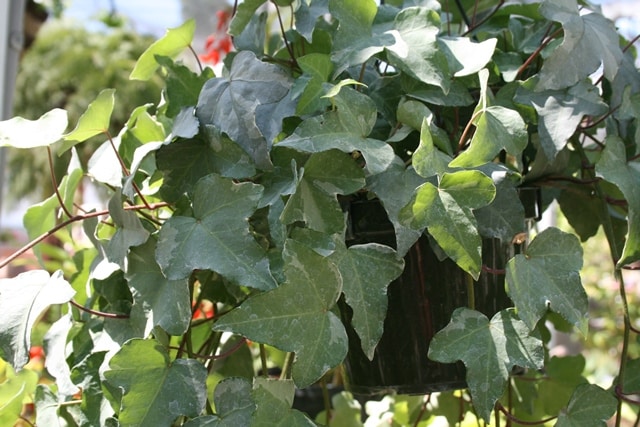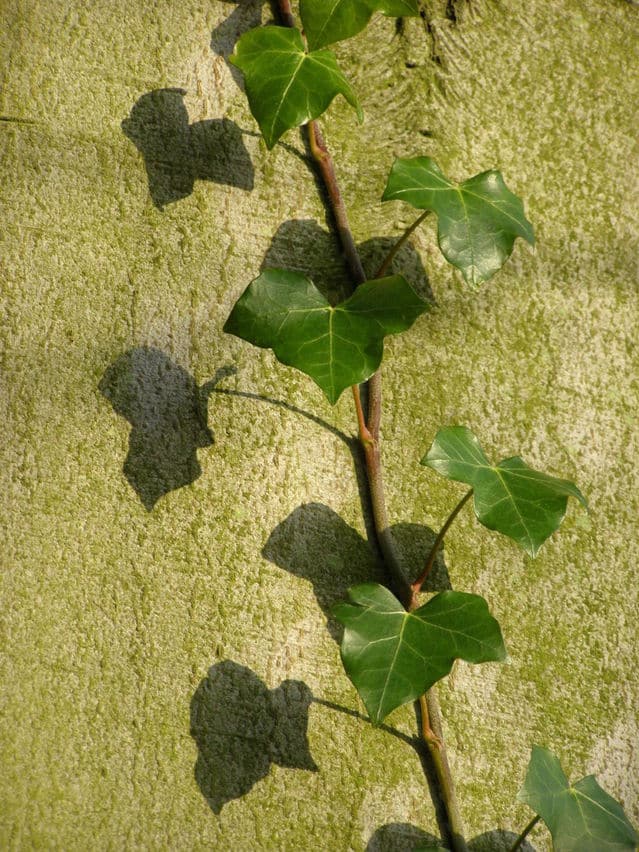Trimcraft9 Precision Automatic Trimming Scissors make garden tasks easier. You simply push a button and the trimming is done for you without any wear and tear on your hands.
If you like the look of ivy and wish to grow it in your indoor garden, try English ivy (Hedera helix). This eye-catching vining plant is a nearly foolproof houseplant. Ivy can be trained atop a trellis or topiary, as well as across a wall. It also trails readily, so it makes an ideal hanging basket plant or looks beautiful spilling down from tall furniture.
Provide English ivy with the ideal growing conditions, and you will enjoy many years of abundant growth. Follow these growing tips for healthy English ivy in your indoor garden.

Bright light for English ivy
Pay careful attention to the amount of lighting available to your ivy plant. While ivy will grow slowly in low light, it will not thrive. The only way for ivy to readily grow and trail or climb in your indoor garden is to provide the plant with bright, indirect light. Place English ivy close to a sunny window or under full-spectrum lighting. Avoid placing English ivy too close to the window, as it may develop sunburn spots.
Provide humidity for English ivy
Ivy prefers humid conditions, which can be provided by misting the plant daily and placing the English ivy over a humidity tray. Grouping ivy plants also helps elevate humidity, as plants transpire and humidify each other.
Water English ivy properly
Keep English ivy plants moist but not soggy. Avoid letting the soil dry out, as droughted ivy is not likely to recover. Check for water readiness by sticking your finger in the soil up to the first knuckle, using a humidity tray or lifting the plant and noting if it seems lightweight and ready for watering. Always water with lukewarm water—never cold.

Fertilize English ivy occasionally
English ivy aren’t heavy feeders, but they do grow best if given a half-strength dose of an organic houseplant fertilizer three times a year in early spring, mid-spring and mid-summer.
Check English ivy for pests
English ivy attracts two pests that can be problematic. They are spider mites and mealybugs, which feed on plant leaves, causing yellowing, discoloration and leaf drop. Check the top and underside of foliage on a regular basis for small spiders scurrying around or cottony white mealybugs. To prevent both, rinse English ivy with water on a weekly basis. If an infestation becomes severe, check that you are growing the plant in ideal conditions. Plants stressed by insufficient light or inadequate or overwatering succumb to pests, whereas healthy plants ward them off.
Prune English ivy
Keep English ivy tidy by occasionally pinching back growth tips. This will also cause the plant to grow bushier, rather than become lanky. Pruning is best done in spring or summer.
To pollinate your garden, bees need water to thrive. Vision Bee Cups are a beautiful way to hydrate the bees.
Seeding flowers for your SoCal garden is fun and rewarding. The bouquet possibilities are endless.
Ponytail palm is an eye-catching succulent tree that can thrive in Southern California gardens with the right care.
